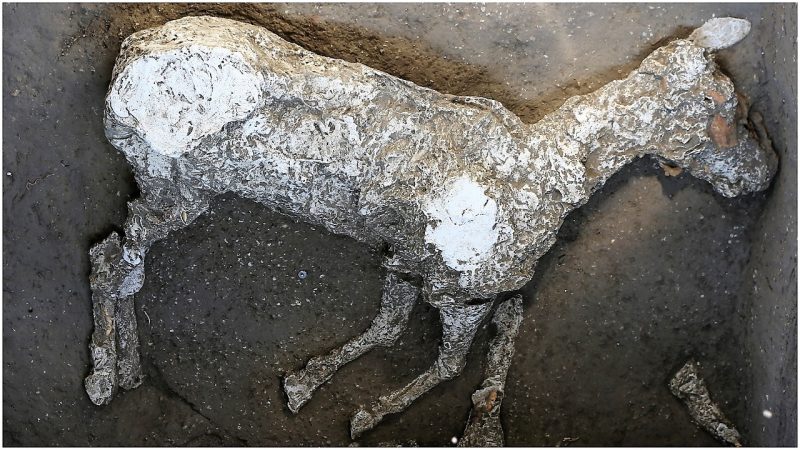The remains of a horse still in its harness were recently unearthed at a villa outside the walls of Pompeii, in what archaeologists are hailing as a find of “rare importance.”
Because the horse was saddled up and ready to go, archaeologists theorize that the horse’s owner was preparing to flee the 79 AD eruption of Mount Vesuvius that buried the town in ashes.
The horse in harness was found with the remains of other horses at what is called the Villa of the Mysteries.
The villa belonged to a Roman general or a military magistrate of high rank.
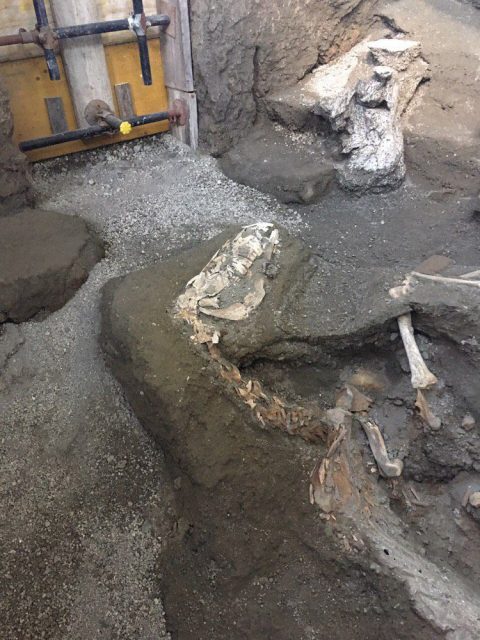
Mount Vesuvius buried Pompeii and several other towns under millions of tons of volcanic debris. The volcano erupted with a thermal energy 100,000 times more powerful than the atomic bombs over Hiroshima and Nagasaki.
In recent years, the horror of the explosion has been analyzed, with scientists believing the heat was so extreme that people’s skills exploded, their blood boiled, and their flesh was replaced by ash.
The BBC reported that the latest discovery came during an excavation of a stable at the villa to the north of Pompeii, according to Massimo Osanna, the director of Pompeii’s archaeological park.
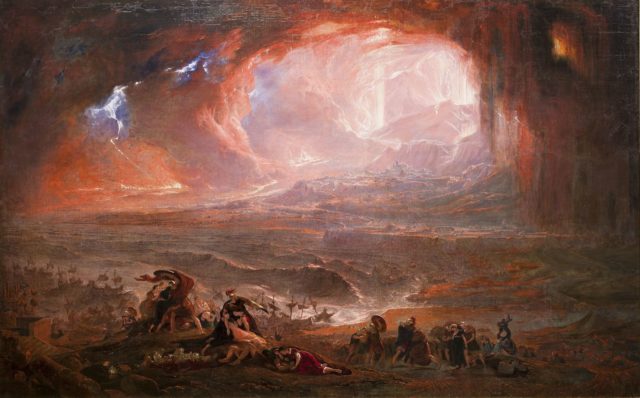
“The apparently well-groomed horse, along with a saddle and a harness with fragments of wooden and bronze trimmings, was found alongside two other horses,” said the BBC.
The horses had all come to a “fierce and terrible end,” Osanna said, suffocated by ashes or by the boiling vapors from Vesuvius ash cloud.
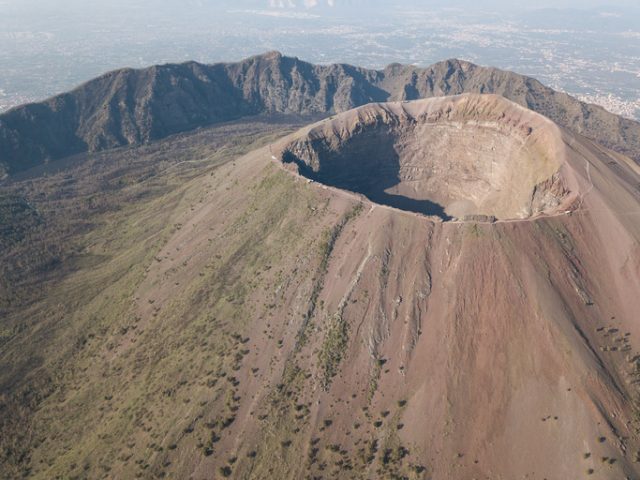
Last March, north of the wall of the archaeological site of Pompeii, a joint operation of the Archaeological Park with the Public Prosecutor’s Office of Torre Annunziata (with Chief Prosecutor Alessandro Pennasilico and Deputy Prosecutor Pierpaolo Filippelli), the Carabinieri Group Command of Torre Annunziata, and the Naples Command for the Protection of Cultural Heritage led to an excavation intervention in order to halt the activity of grave robbers.
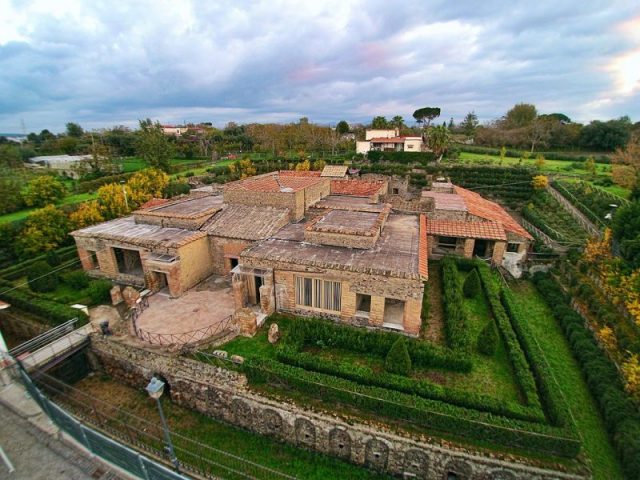
The villa’s terrace would have had views of Capri.
The archaeologists’ intervention revealed rooms of a one time large, well-preserved suburban villa, along with varied finds (amphorae, kitchen utensils, and part of a wooden bed, a cast of which has been made).One of the rooms was identified as a stable of the estate.
In the initial phase of excavation, a wooden trough, the complete outline of a horse and the legs of a second animal were identified, officials said.
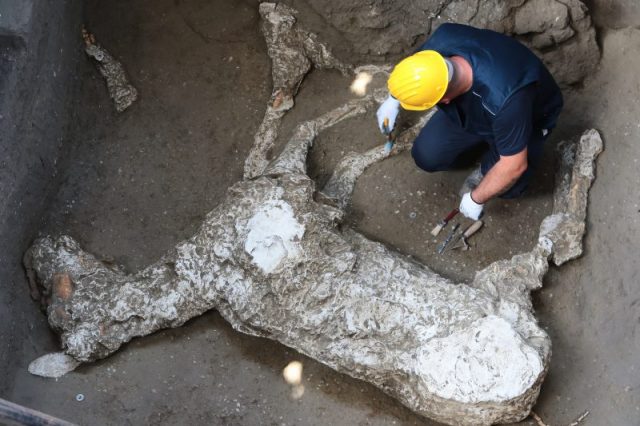
“The current excavation operations, which began in July, have fully unearthed this room and have identified the remaining part of the second horse and a third equid, along with the remains of an elaborate military harness.”
One of the two is laying on its right side, with the skull resting on the front left leg. Presumably tied to the trough, the horse was unable to free itself.
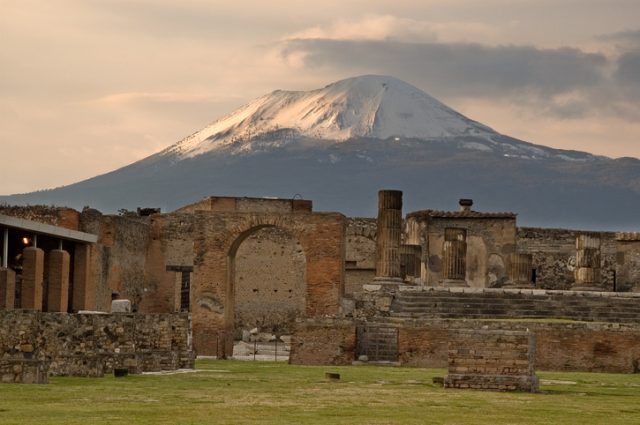
The other horse lies sprawled on its left side, and the iron bit is preserved under the jaw. The digging of tunnels by the grave-robbers, along with the cementing up of the cavities, made it impossible to create a cast of the third horse.
There were warning signs that Mount Vesuvius was erupting, and some people in the area fled. But others, either too poor, or sick, or too confident that they would survive, did not leave Pompeii.
More than 1,000 people died because of the explosion, but the exact number is not known.
Read another story from us: 2000-year-old preserved loaf of bread found in the ruins of Pompeii
Today Mount Vesuvius is considered one of the most dangerous volcanoes in the world because of how many thousands of people live close by. The summit of Vesuvius is open to those who wish to visit.
